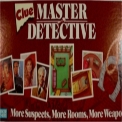Monday, August 13: The Scribbler
COVERING THE STORY Part 2
by James Lincoln Warren
Last week I told how I had decided to write “When the Wind Blowsâ€, the short story that earned the cover of the October issue of Alfred Hitchcock’s Mystery Magazine. At that moment, I had only two ideas: a cop obsessed with a crime (a requirement for the anthology for which the story was intended), and the Santa Ana winds (in tribute to Raymond Chandler’s classic “Red Windâ€).
The next and most obvious thing to do was to choose the crime. What kind of crimes most disturb law enforcement officers? The answer is obvious: crimes against children. So I knew that my cop was going to be faced with the death of a child. To up the ante, I decided to make the victim the most helpless of all children, viz., an infant.
To amplify the horror attendant on crime, it is generally useful to establish a relationship between the victim and the investigator, to make the investigation “personal.†This doesn’t have to come up front. It can develop while the investigation proceeds, as the detective learns more about his victim. In fact, this is dramatically more realistic than having a close friend knocked off—despite my adoration of John D., I sometimes despaired of all of Travis McGee’s ex-girlfriends getting knocked off, for example. Anyway, establishing such a relationship goes a long way to explain how an investigation evolves into obsession.
The trouble here is that infants are essentially devoid of personalities for the purposes of fiction, making the interaction between detective and victim very difficult to establish. Now, in real life, we all know that babies have distinct personalities, but how do you show that in a short story? A baby’s personality only stands out in contrast to other babies. I couldn’t very well have a story crawling with snotty-nosed urchins—the last thing I needed was a terminal case of cute.
Also, in trying to make the victim a real character, I would run the risk of completely alienating the reader when the child was murdered. There needed to be some distance between the reader and the victim to make the story palatable. So I decided to make it a serial crime and keep the dead babies off stage. Multiple murders are more horrific than single ones, and that would serve to amplify the emotions without actually making a connection to the victim. Aloha, relationship. I decided to sacrifice quality for quantity, as it were.
It also played into my Santa Ana motif. I could use the Santa Ana wind as a trigger for the criminal, and to establish that, there would need to be more than one murder. To make the Santa Anas more powerful, I decided to put the action in the Antelope Valley, which is a Los Angeles bedroom community in the high Mojave Desert.
Finally, I needed to have a law enforcement agency with limited resources, because a large agency would be all over mass baby murders like the U.S. Marines on a beachhead. My detective would be lost in the shuffle, and it was necessary that he be the central character. The trouble is that the Antelope Valley is served by the Los Angeles Sheriff’s Department, the single largest local law enforcement agency in the U.S. So I invented a town and provided it with its own small police force. (I found out in a conversation with John Morgan Wilson that he had faced the same consideration in setting one of his incredible Benjamin Justice novels in the high desert, and had independently come up with the same solution.)
So now I was set. I wrote a first draft, and because (1) I always vet a story to readers whose criticism I respect before I submit it, and (2) I wasn’t sure if the “contemporary†voice I had adopted really worked, having been steeped in historicals for so long, I sent the story to Paul Guyot and Deborah Elliott-Upton for their respective comments. In return, they sent me the rough drafts of the stories they were working on for the same anthology.
Paul’s story was called “What a Wonderful Worldâ€. Deb’s story was called “Texas Rubyâ€. (To read about Deborah’s own experience in writing her offering, click here.)
They were about cops investigating the deaths of children.
I knew I was in trouble.
Next week, I humbly follow advice and confront bitter failure.




















Wow, great ending for the column, James. I like a blog with a twist ending.
And I always appreciate one where my name appears. LOL